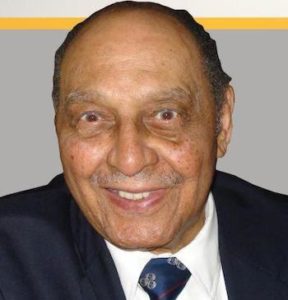
Clarence Beavers
*Clarence Beavers was born on this date in 1921. He was a Black United States Army sergeant and paratrooper.
Clarence Hylan Beavers was born in Harlem, New York, and was the 15th of 16 children to parents who fled the South before he was born to escape racism. His maternal grandfather was an escaped slave who served in the Union Army during the American Civil War.
As a youth, the 1929 stock market crash that ushered in the Great Depression hugely affected his family. He joined the 369th Infantry Regiment, New York State National Guard, in 1939 but left in the summer of 1940. Owning a restaurant, he felt his time would be better spent caring for it. However, in the spring of 1941, he was drafted just months before the Japanese attack on Pearl Harbor. He was part of the groundbreaking group of Black paratroopers assigned to the 555th Parachute Infantry Battalion, also known as the "Triple Nickles" and later "Smoke Jumpers" at Fort Benning in Georgia.
During the 1940s, army posts in the South were largely segregated. Beavers later told stories about how unit members were not allowed to use the post exchange or mess hall, a privilege even Italian and German prisoners of war being held there were allowed. The unit served stateside, mostly on the West Coast, protecting against Japanese fire balloons, described as the world’s first intercontinental-range airborne weapons, giant bomb-laden balloons launched from Japan and aimed at North America. His brother, Leo Beavers, also served in the Army during World War II.
Clarence Beavers died on December 4, 2017, at his home in Huntington, Long Island, of a coronary-related illness. He was 96 and interred at Calverton National Cemetery.